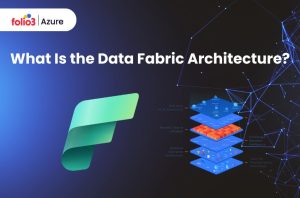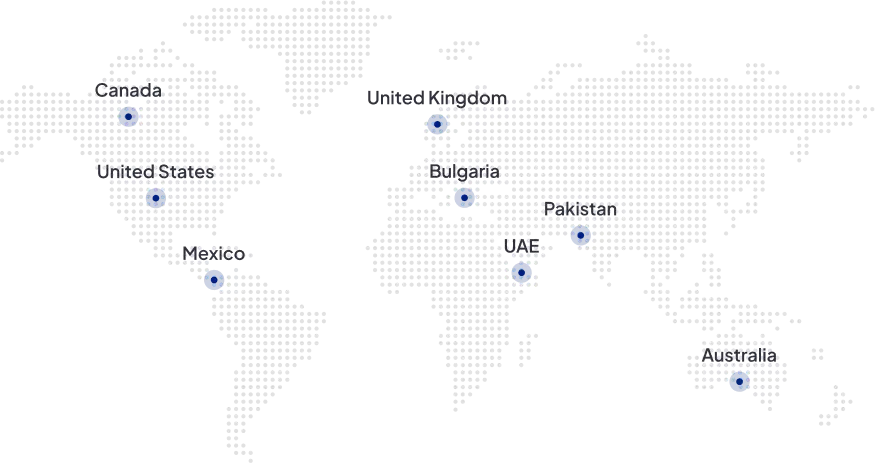Table of Contents
ToggleIn the evolving landscape of enterprise technology solutions, Microsoft Fabric has emerged as a pioneering and essential component in the infrastructure of organizations. Designed to facilitate an agile, scalable, and responsive IT environment, Microsoft Fabric resonates with IT professionals and developers seeking to harness its capabilities for seamless integration and powerful deployment. This extensive blog post is tailored for professionals aiming to not only comprehend the fundamentals of Microsoft Fabric but also those interested in strategic insights for optimal utilization of its rich offerings.
Accelerate smart decisions with Microsoft Fabric's unified data and AI analytics.

Understanding Microsoft Fabric
At its foundation, Microsoft Fabric is a modular and adaptable suite of cloud services that offers a consolidated platform for application development, integration, and deployment. With interconnected components designed to work in synergy, Fabric presents a robust approach to streamlining business workflows, fostering collaboration, and ensuring data-driven decision making.
Core Concepts and Architecture
Microsoft Fabric revolves around the principles of microservices and service-oriented architecture (SOA) to enable independent development, scaling, and maintenance of various application components. The architecture is underpinned by a container-based approach, such as Docker, which enhances portability and consistency when orchestrating complex deployments through Kubernetes integration.
The fabric model within this technology dwarfs its competitors through a connected platform of APIs, governance tools, and services across the cloud and on-premise environments, paving the way for a truly hybrid cloud strategy.
Functionalities and Integrations
One of Fabric’s key strengths lies in its deep integration with existing Microsoft tools and services, notably Azure, Power Platform, and Dynamics 365. These integrations offer a comprehensive enterprise solution framework that promotes a unified approach to business operations, enabling rapid development and continuous delivery of applications.
The robustness of Fabric functionalities extends to data processing capabilities, such as real-time analytics, AI and machine learning services, and blockchain integration, creating a versatile environment to innovate and address evolving business needs.
Capacity and Scalability
The ability of a system to manage user loads and growing business data volumes is critical to operational stability and efficiency. Microsoft Fabric is designed with scalable components that can be adjusted to meet the unique demands of enterprises.
Scalability Options
Microsoft Fabric empowers organizations with various scaling options, including the capability to increase resources vertically within an application service or scale out horizontally to handle increasing data and user loads. Leveraging autoscaling features, Fabric can dynamically allocate or deallocate resources based on performance metrics and demand spikes.
The inherent architecture of Fabric allows for a distributed deployment model, where workloads can be efficiently distributed across multiple nodes to maintain high availability and fault tolerance.
Managing Capacity Strategically
For organizations leveraging Fabric, it is imperative to strategize capacity management to align with business goals and budgetary constraints. Through dedicated capacity planning tools and best practices, enterprises can optimize workloads, forecast growth, and ensure efficient resource utilization.
Microsoft also provides capacity and performance monitoring services within the Fabric framework, offering insights into resource consumption, operational health, and performance metrics that aid in making informed scaling decisions.
Deployment Models
Setting up the right deployment model is crucial for realizing the benefits of Microsoft Fabric. This section evaluates two primary deployment options: S3 cloud solutions and on-premise implementations.
Cloud Integration
Microsoft Fabric’s S3 cloud solutions are an intrinsic part of its offering, providing a suite of services like Azure Cosmos DB, Azure Functions, and Logic Apps for building high-performing and resilient applications in the cloud. These serverless services further enhance agility and reduce operational overhead by eliminating the need to manage infrastructure.
The seamless integration with Azure services ensures a consistent developer experience and facilitates the rapid integration and deployment of applications with minimal friction.
On-Premise Flexibilities
For organizations with specific regulatory requirements or those seeking to maintain critical workloads on-premise, Microsoft offers the option to deploy Fabric on local infrastructure. This deployment model ensures data sovereignty and allows seamless integration with existing systems, providing a bridge to cloud adoption at the organization’s pace.
On-premise deployments, however, require diligent planning and resource management to establish and maintain the necessary infrastructure, making them more challenging from an operational cost and complexity standpoint.
Advantages and Challenges
Deploying Microsoft Fabric brings a host of advantages, but no technology is without challenges. Understanding these nuances is essential for making informed decisions and successfully navigating the adoption journey.
Advantages of Fabric Adoption
The adoption of Microsoft Fabric equips enterprises with agility, modernization, and innovation. The platform’s integration with critical Microsoft services and the broader technology ecosystem enables quick access to a rich set of tools, fostering rapid and continuous application development.
Fabric also excels in providing robust security features and compliance frameworks. With built-in security measures and Microsoft’s OneSecurity initiative, Fabric offers unified protection against cyber threats and data breaches, bolstering an organization’s defense mechanisms.
Identifying and Addressing Challenges
While the benefits of Microsoft Fabric are compelling, challenges such as complex deployment configurations, training requirements for developers, and migrating existing legacy systems pose significant hurdles.
Enterprises must approach these challenges with a comprehensive strategy, which includes robust change management processes, investment in upskilling the workforce, and leveraging Microsoft’s extensive support and partner network for seamless transition and adoption.
Strategic Insights
With a plethora of cloud services and integration platforms available, strategic insights into Microsoft Fabric’s unique positioning and future trajectory can be invaluable for decision-makers.
Roadmap and Future Development
Microsoft has demonstrated a firm commitment to continuously developing Fabric, with regular updates and new feature releases. Enterprises can stay informed about the platform’s roadmap and upcoming enhancements to plan for future innovations and feature integrations that align with their business strategies.
The emergence of Microsoft’s Data Activator initiative under Fabric signifies the company’s deepening focus on data as a key resource. By understanding and leveraging upcoming Data Activator features, organizations can gain a competitive edge in harnessing the full potential of their data for strategic decision-making and customer insights.
Competition and Collaborative Opportunities
In a landscape increasingly defined by cloud service providers, understanding Fabric’s competitive position relative to solutions like AWS Lambda and Google Cloud Functions is crucial. By recognizing its distinct capabilities and strategic partnerships, enterprises can identify collaborative opportunities to enhance their Fabric deployments.
Furthermore, Microsoft Fabric’s extensive portfolio of connectors enables a broad spectrum of integration possibilities with third-party applications, data sources, and services. Smart utilization of these connectors can lead to enhanced operational efficiencies and greater value realization.
Microsoft Fabric: The Powerful Tapestry of Modern Data Management
In the fast-evolving landscape of IT infrastructure, enterprises are constantly on the lookout for the latest tools and platforms that promise data agility, scalability, and robustness. Microsoft, a perennial front-runner, has unveiled its own masterpiece in the form of Microsoft Fabric, redefining approaches to data management, integration, and analytics.
For IT Professionals and developers entranced by the potential of this digital silk, understanding and harnessing the true scope of Microsoft Fabric is pivotal. Here, we’ll take a deep, strategic, and comprehensive gaze into the tech tapestry that is Microsoft Fabric, illuminating its core features, competitive edge, and strategic utilization.
Fabric's Robust Security Framework
At the foundational level, data security isn’t an afterthought in Microsoft Fabric—it’s the linchpin of its operational structure. Fabric’s Security Framework is more than just a feature; it’s an ongoing commitment to safeguarding enterprise data. For starters, Fabric is anchored within an Azure environment, providing the bedrock of security, privacy, and compliance capabilities.
The intricate threads of this framework extend to the fabric’s integration with Microsoft OneSecurity, offering a finely woven layer of defense against evolving cyber threats. Enterprises can rely on OneSecurity for its full-spectrum security posture, encompassing threat protection, information protection, identity and access management, and security management.
Future-Proofing with Microsoft Fabric
No tapestry is complete without the artist’s vision, and Microsoft’s dedication to future-readiness is evident in Fabric’s Strategic Roadmap. With a transparent and agile approach to updates and features, enterprises can align their own roadmap with Microsoft’s, ensuring that their data capabilities stay ahead of industry trends.
Microsoft’s focus on cloud-native applications and hybrid infrastructure integration within the Fabric roadmap is particularly resonant, providing a guiding star for organizations navigating the intricate paths of digital transformation.
The Data Activator: Streamlining Your Information Ingestion
Data is the lifeblood of modern enterprises, and Fabric’s Data Activator serves as a vital organ, ensuring that this lifeblood flows seamlessly into an organization’s system. By accelerating data ingestion and integration processes, the Data Activator enables businesses to harness the power of their data with agility and precision.
Through intelligent orchestration and automation, the Data Activator breaks down silos, enabling a unified view of data while supporting advanced analytics and insights that drive actionable business intelligence.
The Significance of Connectivity
Integration and connectivity are crucial components of a tool intended to orchestrate the vast and diverse forms of contemporary data. Microsoft Fabric Connectors form the warp that holds together different data sources, applications, and services, ensuring a tight and efficient integration tapestry.
By providing pre-built connectors for various platforms and services, Fabric significantly reduces the time and complexity involved in integrating disparate data sources, a competitive advantage that directly influences an organization’s operational agility.
Understanding Fabric's Core Components
To truly master the art of using Microsoft Fabric, one must first comprehend its architectural elements. Whether it’s the data layer, the compute layer, the storage layer, or the modern set of services that envelop the core infrastructure, each thread plays a critical role.
The adaptability and scalability of each component allow Fabric to cater to the needs of small-scale businesses and enterprise-level operations alike, offering a weave that can be tailored to fit any organizational structure or requirement.
Strategic Recommendations for Utilizing Microsoft Fabric
Adopting Microsoft Fabric isn’t merely a technical decision; it’s a strategic one that should be aligned with an organization’s overarching business goals. Whether it’s optimizing for data-driven insights, enhancing data governance, or supporting complex analytics, Fabric can be tailored to provide a strategic advantage.
Engaging with the wide array of resources Microsoft makes available to potential adopters, such as consultations with domain experts, proof-of-concept deployments, or specialized training, is crucial for enterprises to extract the maximum value from their investment in Microsoft Fabric.
Exploring the Depths of Microsoft Fabric
The prospect of integrating Microsoft Fabric into an organization’s technological canvas is as exciting as it is vast. For business leaders, the call to action is clear—immerse in the dynamic capabilities of Fabric and discover how it can revolutionize data management within your enterprise.
Whether you’re enticed by the security of its weave, the strategic foresight driving its development, or the seamless connectivity it promises, the Microsoft Fabric stands ready to be woven into the future of your organization’s data story. Now, it’s time to pick up the threads and start designing your own with a tapestry rich in potential.
Visit Microsoft’s dedicated platform to begin the exploration, or better yet, engage with their specialists and authorized partners for hands-on demonstrations and custom consultations. The fabric of your future data ecosystem beckons—embrace its potential with Microsoft Fabric.
Conclusion
Microsoft Fabric stands at the nexus of Microsoft’s vision for an interconnected, intelligent, and integrated technology environment. For IT professionals and developers, the platform offers a captivating suite of services and tools that promise to reshape the digital transformation narrative.
Incorporating Microsoft Fabric into your organization’s technology stack is a strategic decision that requires careful consideration and planning. By leveraging the insights presented in this post, enterprises can set the stage for a successful adoption of Fabric, positioning themselves to drive innovation, meet customer demands, and chart a sustainable path in the digital age.



